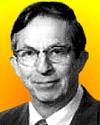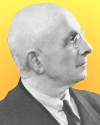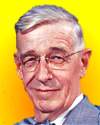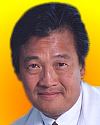 | TODAY IN SCIENCE HISTORY NEWSLETTER - 28 JUNE |
| Feature for Today |
 On 28 Jun 1923, Herman M. Biggs died, an American physician who was New York City's Public Health Officer and pioneered the use of bacteriological studies in the field of public health for the prevention and control of contagious diseases. On 28 Jun 1923, Herman M. Biggs died, an American physician who was New York City's Public Health Officer and pioneered the use of bacteriological studies in the field of public health for the prevention and control of contagious diseases.In his article, The New Treatment of Diphtheria, in The Century Magazine (1895), he described the value of a dipheria "anti-toxine" for the public treatment of that disease to reduce its death toll. He expressed the hope that It seemed entirely probable that through the influence of the anti-toxine on the prevention and cure of diphtheria, the disease could eventually be brought completely under control. His pioneering work helped make that possible. |
| Book of the Day | |
| |
| Quotations for Today | |
 | "It's hard to explain to people what the significance of an invention is, so it's hard to get funding. The first thing they say is that it can't be done. Then they say, ‘You didn't do it right.’ Then, when you've done it, they finally say, ‘Well, it was obvious anyway.’" |
 | "Mathematics began to seem too much like puzzle solving. Physics is puzzle solving, too, but of puzzles created by nature, not by the mind of man." |
 | "There is a strange disparity between the sciences of inert matter and those of life. Astronomy, mechanics, and physics are based on concepts which can be expressed, tersely and elegantly, in mathematical language. They have built up a universe as harmonious as the monuments of ancient Greece. They weave about it a magnificent texture of calculations and hypotheses. They search for reality beyond the realm of common thought up to unutterable abstractions consisting only of equations of symbols. Such is not the position of biological sciences. Those who investigate the phenomena of life are as if lost in an inextricable jungle, in the midst of a magic forest, whose countless trees unceasingly change their place and their shape. They are crushed under a mass of facts, which they can describe but are incapable of defining in algebraic equations." |
| QUIZ | |
| Before you look at today's web page, see if you can answer some of these questions about the events that happened on this day. Some of the names are very familiar. Others will likely stump you. Tickle your curiosity with these questions, then check your answers on today's web page. | |
| Births | |
 |  F. Sherwood Rowland, born 28 Jun 1927, is an American chemist who shared the 1995 Nobel Prize for Chemistry with chemists Mario Molina and Paul Crutzen for research on the depletion of the Earth's ozone layer. F. Sherwood Rowland, born 28 Jun 1927, is an American chemist who shared the 1995 Nobel Prize for Chemistry with chemists Mario Molina and Paul Crutzen for research on the depletion of the Earth's ozone layer. What was discovered as a culprit for ozone depletion? What was discovered as a culprit for ozone depletion? |
 |  Alexis Carrel, born 28 Jun 1873, was a French scientist, surgeon, biologist, who received the 1912 Nobel Prize for Physiology or Medicine for developing a method of suturing blood vessels. He also did notable work on the problem of keeping tissue alive after removal from a living organism. The most famous example was a piece of tissue from the heart of a chicken embryo, which was kept for a certain number of years from 1912 until the experiment was deliberately ended (after Carrel had died). Alexis Carrel, born 28 Jun 1873, was a French scientist, surgeon, biologist, who received the 1912 Nobel Prize for Physiology or Medicine for developing a method of suturing blood vessels. He also did notable work on the problem of keeping tissue alive after removal from a living organism. The most famous example was a piece of tissue from the heart of a chicken embryo, which was kept for a certain number of years from 1912 until the experiment was deliberately ended (after Carrel had died). How long was the chicken embryo tissue kept alive? How long was the chicken embryo tissue kept alive? |
| Deaths | |
 |  Vannevar Bush (1890-1974) was an American electrical engineer, who at the age of 35 developed the differential analyzer, (1925) the world's first analog computer. It was capable of solving differential equations. This machine filled a room. Vannevar Bush (1890-1974) was an American electrical engineer, who at the age of 35 developed the differential analyzer, (1925) the world's first analog computer. It was capable of solving differential equations. This machine filled a room.  What size room was used for this machine? What size room was used for this machine? |
 |  On 28 Jun 1889, a certain woman died who was the first American professional woman astronomer. While pursuing an amateur interest, on 1 Oct 1847, she gained fame from the observation of a comet which she was first to report. She was also the first female member of the American Association of Arts and Scienecs. On 28 Jun 1889, a certain woman died who was the first American professional woman astronomer. While pursuing an amateur interest, on 1 Oct 1847, she gained fame from the observation of a comet which she was first to report. She was also the first female member of the American Association of Arts and Scienecs.  Can you name this woman? Can you name this woman? |
| Events | |
 Dr. Fung |  In 1992, transplant surgery by Dr John Fung and collegues made a 35-year-old man at the University of Pittsburgh Medical Center the first recipient of a liver transplant from a certain animal; he lived ten more weeks. In 1992, transplant surgery by Dr John Fung and collegues made a 35-year-old man at the University of Pittsburgh Medical Center the first recipient of a liver transplant from a certain animal; he lived ten more weeks. What animal's liver was transplanted? What animal's liver was transplanted? |
 |  On 28 Jun of a certain year, the first virus in crystalline form was reported. Professor Wendell Stanley later received a Nobel Prize in Chemistry for his work on the tobacco mosaic virus, which he crystallized. The demonstration of the molecular properties of the virus gave impetus to a new research approach in virology: the study of viruses as large molecules. This was a departure from the predominant view of viruses as infectious agents causing disease. On 28 Jun of a certain year, the first virus in crystalline form was reported. Professor Wendell Stanley later received a Nobel Prize in Chemistry for his work on the tobacco mosaic virus, which he crystallized. The demonstration of the molecular properties of the virus gave impetus to a new research approach in virology: the study of viruses as large molecules. This was a departure from the predominant view of viruses as infectious agents causing disease. In what decade was this day? In what decade was this day? |
 |  On 28 Jun 1958, the world's longest suspension bridge at that time, was dedicated. On 28 Jun 1958, the world's longest suspension bridge at that time, was dedicated. Which bridge was this? Which bridge was this? |
| Answers |
When you have your answers ready to all the questions above, you'll find all the information to check them, and more, on the June 28 web page of Today in Science History. Or, try this link first for just the brief answers. Fast answers for the previous newsletter for June 27: the influence exercised by various parts of the embryo that directs the development of groups of cells into particular tissues and organs; the discovery of Neptune; birds; funds in his will for the founding of the Smithsonian Institution; 14; the decade including the year 1954; magnesium. |
| Feedback |
 If you enjoy this newsletter, the website, or wish to offer encouragement or ideas, please send feedback by using your mail reader Reply button. If you enjoy this newsletter, the website, or wish to offer encouragement or ideas, please send feedback by using your mail reader Reply button. |
--
If you do not want to receive any more newsletters, this link
To update your preferences and to unsubscribe visit this link
If you do not want to receive any more newsletters, this link
To update your preferences and to unsubscribe visit this link
! !



Δεν υπάρχουν σχόλια:
Δημοσίευση σχολίου